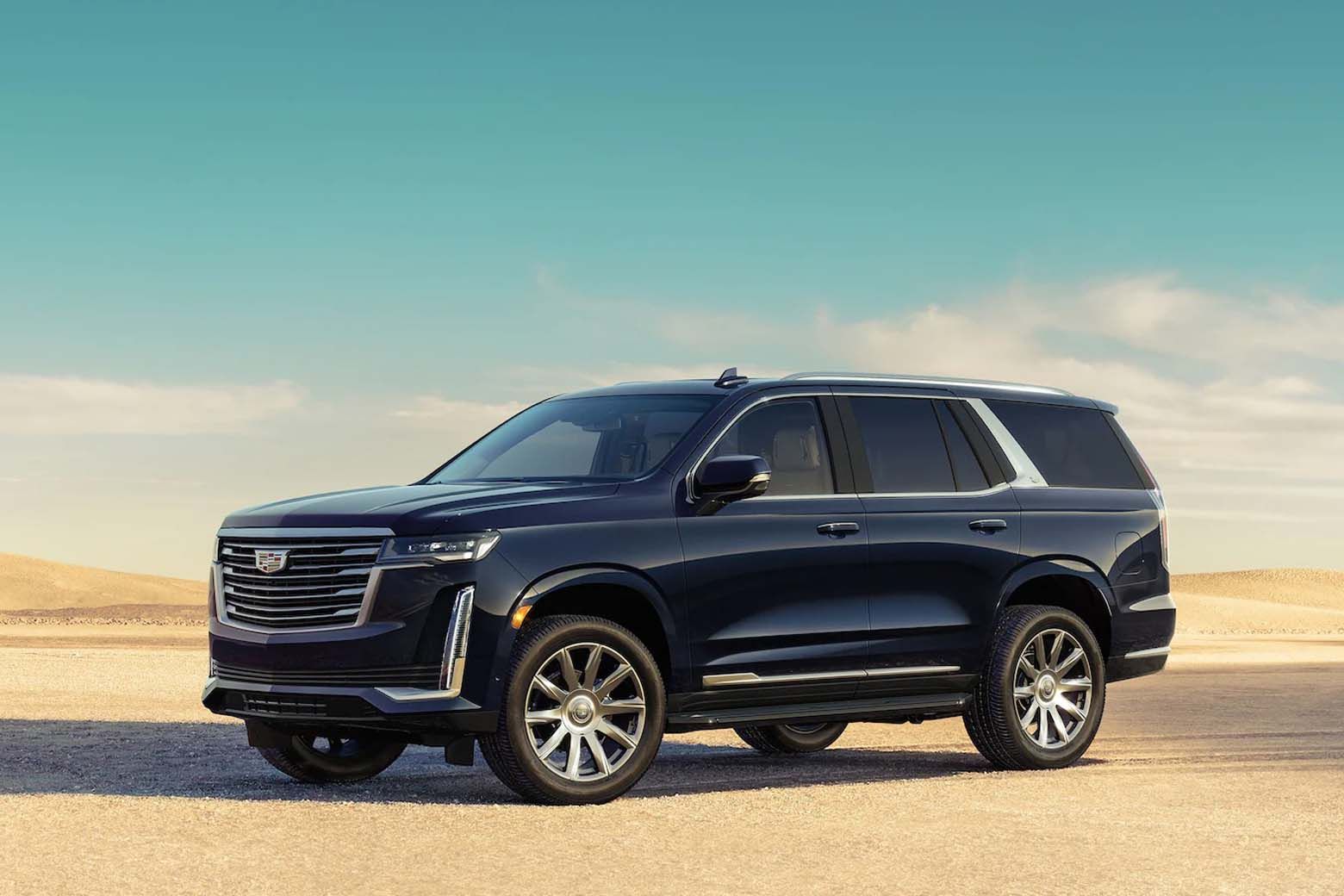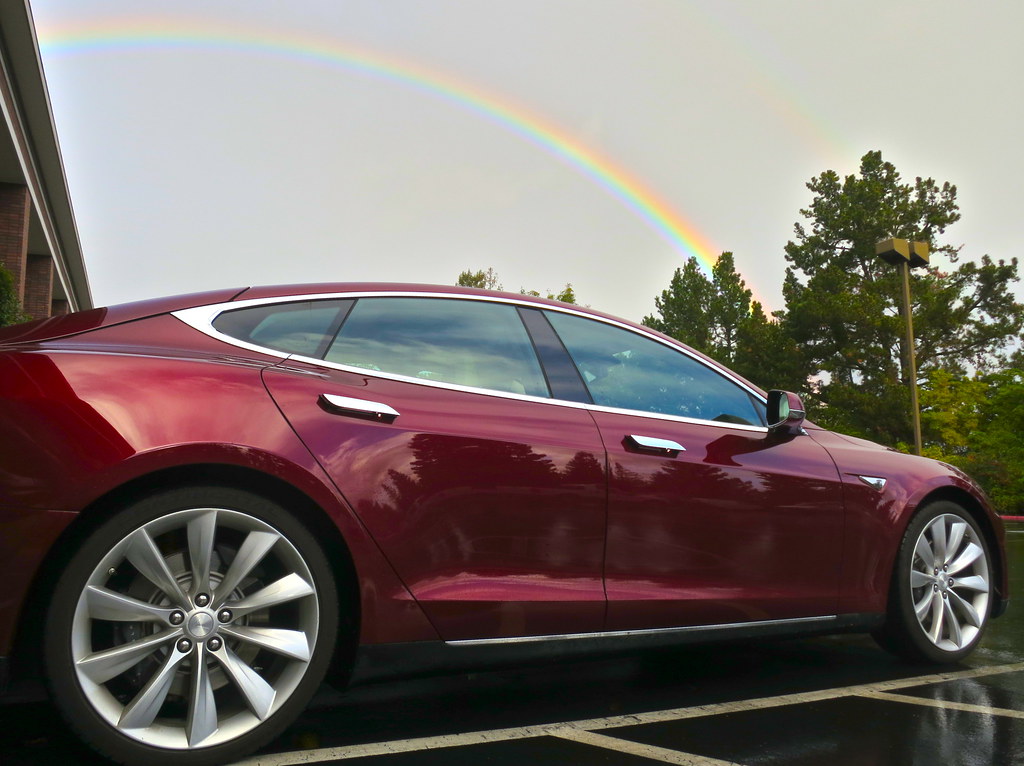
We’re used to seeing lists full of automotive perfection, aren’t we? Muscle cars with massive engines and even larger egos, supercars that make hearts race, or retro cars with quirky styles you’d only see in decades past. But what if we told you that some of the most memorable vehicles in American history weren’t lauded for their beauty or blistering speed, but rather for their… well, their sheer inability to win a beauty contest?
It’s time to rip you away from those pristine fantasies and drag you onto a highway full of misfit cars that will make even your trusty Honda Accord look like it’s racing down a runway. America the beautiful? Not with these things on the road! Yet, despite their questionable design choices, these American cars have become legends in their own way. They drove us to prom, helped us move across the country, and kept us employed doing pizza delivery. We often look past how icky these cars looked on the outside and instead remember some of our favorite moments while driving inside them. Yes, they’re ugly, but they’re undeniably iconic.
To define “ugly” is a bit subjective, especially when considering vehicles that now command respect (and high prices) among collectors. We consulted forums, Facebook groups, threads, and reviews to get insight into what the general American public thought about these cars during their prime. The cars with the most soul-crushing jabs ended up here, but make no mistake: we’re celebrating these cars, not just mocking them. Many comments supported our feelings that these cars were not pretty, yet there were also plenty talking about the car’s memorable performance or the impact it had on drivers’ lives. And isn’t that more important than having the perfect bumper? Depends on who you ask, but for these 14 vehicles, their flaws have become their fortune. Let’s dive into the first seven.
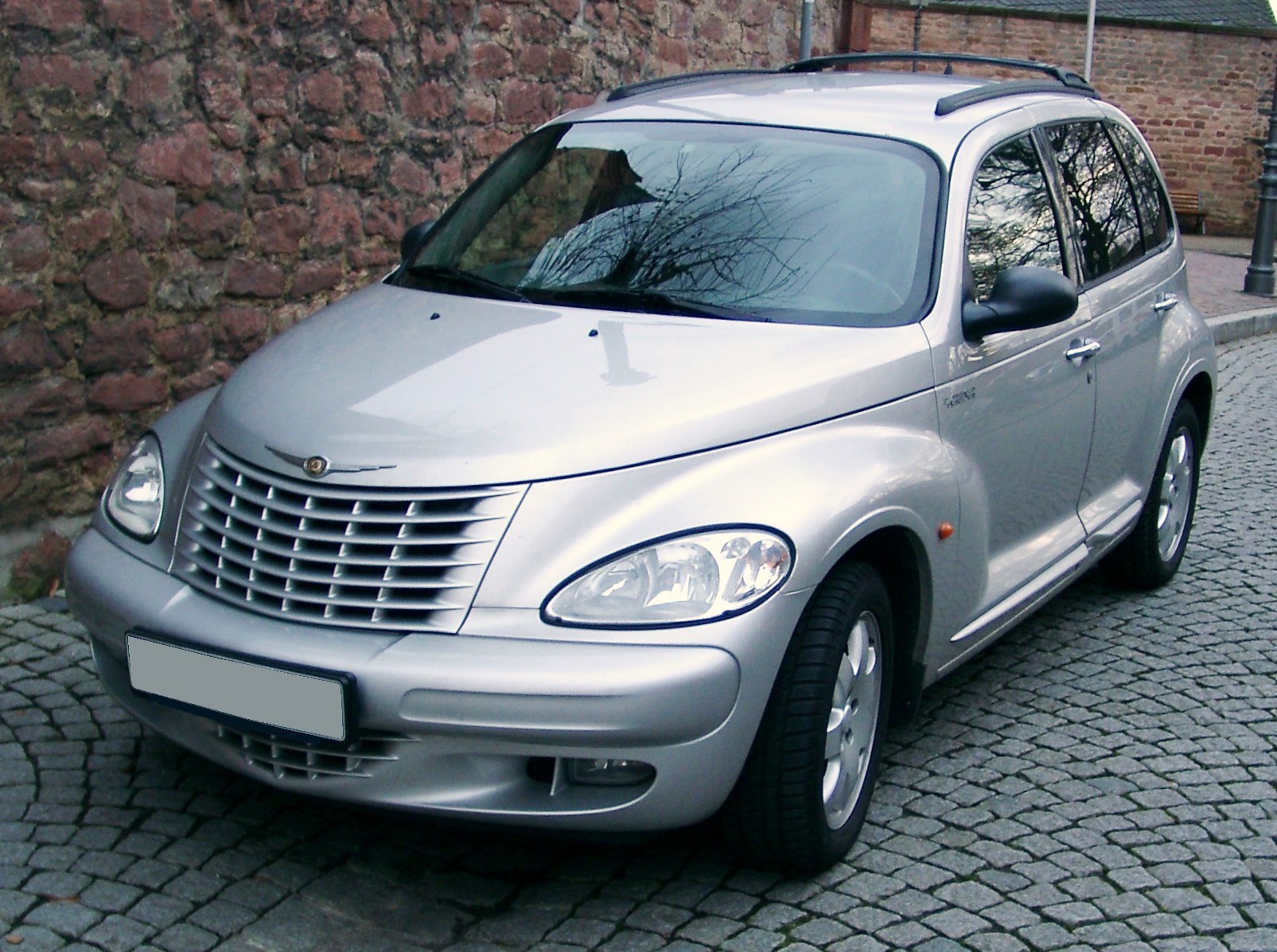
1. **Chrysler PT Cruiser**The Chrysler PT Cruiser was undeniably polarizing when it first rolled out in the early 2000s. Its retro, almost cartoonish design was a bold attempt to recapture the charm of classic American cars, but it certainly left many scratching their heads. With its high roofline and a boxy rear end, it truly gave off the appearance of a minivan desperately trying to be something more, struggling to define its own identity on the road.
Despite the mixed opinions on its looks, the PT Cruiser became a surprising hit in the early 2000s. People were drawn to its incredibly roomy interior and that distinct, quirky personality that few other vehicles offered at the time. It offered practicality wrapped in a package that was either adored or detested, with very little in-between.
Fast forward to today, and the PT Cruiser has transitioned into an unexpected collector’s item. As Robert S. Miller writes for Mopar Insiders, it’s cherished by those who appreciate its eccentric styling and unorthodox place in automotive history. Its status as a quirky crossover makes it a nostalgic piece of early-2000s automotive culture, a tangible memory of a time when car designs were still willing to take risks. With production stopped and fewer models available, those who love it see it as a truly unique piece of Americana. Its endearing, “love it or hate it” design is precisely what gives it value among collectors today.
Car Model Information: 2020 Kia Telluride S
Name: Chrysler PT Cruiser
Manufacturer: Chrysler
ModelCode: PT,PG
Production: 2000–2010
ModelYears: 2001–2010
Assembly: Toluca, Mexico State
Designer: Bryan Nesbitt
Class: Compact car
BodyStyle: convertible
Platform: Chrysler PT platform
Related: Dodge SRT4,Dodge Neon
Predecessor: Dodge Neon
Successor: Lancia Delta#Third generation
Layout: Front-engine, front-wheel-drive layout
Engine: ubl
Transmission: Ultradrive#40TE
Wheelbase: 103 in
Abbr: on
Length: 168.8 in
Width: 67.1 in
Height: 63 in
Weight: 3123 lb
Categories: 2010s cars, All articles with unsourced statements, Articles with short description, Articles with unsourced statements from March 2018, Cars discontinued in 2010
Summary: The Chrysler PT Cruiser is a compact car that was built by the American company Chrysler from 2001 until 2010. Introduced as a five-door hatchback wagon, a two-door convertible variant was also made from 2005 until 2008.
Originally planned as a Plymouth model, the PT Cruiser was ultimately marketed as a Chrysler when Plymouth was discontinued. Intended to invoke 1930s aesthetics, the exterior of the PT Cruiser was designed by Bryan Nesbitt. The model received an intermediate facelift for the 2006 model year. Interior packaging was noted for its high roof, high h-point seating, and flexible cargo and passenger configurations enabled by a multi-level rear cargo shelf and rear seats a user could fold, tumble, or remove.
The PT Cruiser was produced in Mexico and Austria at the Toluca Car Assembly and Eurostar Automobilwerk factories respectively. By the end of production in July 2010, worldwide production had reached 1.35 million.
In its nameplate, PT stands for “Personal Transport” or “Personal Transportation”. PT was the PT Cruiser’s product code for the Mexican-made units.
Get more information about: Chrysler PT Cruiser
Buying a high-performing used car >>>
Brand: Chrysler Model: PT Cruiser
Price: $20,988 Mileage: 88,231 mi.
Read more about: The True Kings of the Road: 15 Muscle Cars That Defined an Era
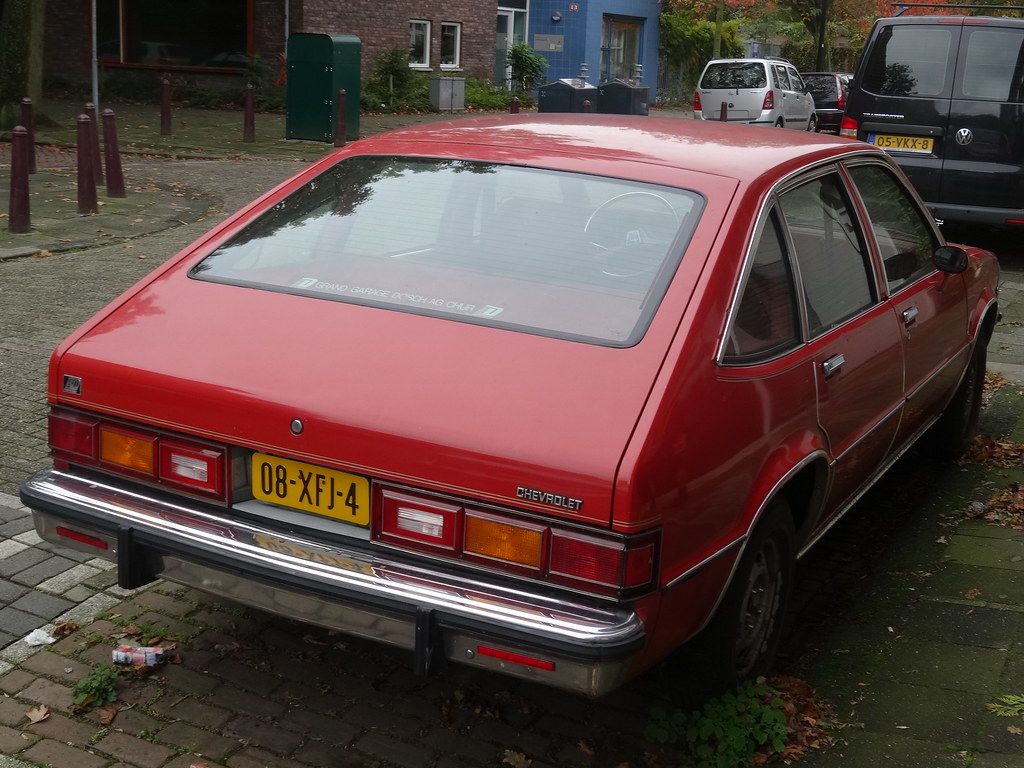
2. **Chevrolet Citation**The Chevrolet Citation is often remembered as one of the quintessential “ugly American” cars of the 1980s. Designed to be a futuristic take on compact cars, its boxy, bland design and subpar performance unfortunately made it a disappointment for many eager buyers. It was meant to usher in a new era for compact vehicles, but its execution fell short of its ambitious vision.
Despite these undeniable shortcomings, the Citation was actually a best-seller when it first debuted. However, this early success was quickly overshadowed by widespread criticism for its poor reliability and a distinct lack of refinement. It was a car that symbolized Detroit’s struggles during the early years of the 1980s, an era when American automakers were grappling with changing market demands and increasing competition.
Today, the Chevrolet Citation has become a rare collector’s item, mainly because it serves as a stark reminder of that challenging period in American automotive history. As Jeff Lavery explains on Barn Finds, finding a Citation in good condition is a real gem for car collectors. Many enthusiasts now see it as a symbol of Detroit’s attempt to break into the compact car market in a new way. Its infamy has paradoxically given it a sort of cult status, making it oddly desirable to certain collectors who appreciate its historical significance and rarity, recognizing it as a unique chapter in the story of American cars.
Read more about: Beyond Their Time: 15 Legendary Muscle Cars That Still Command the Road
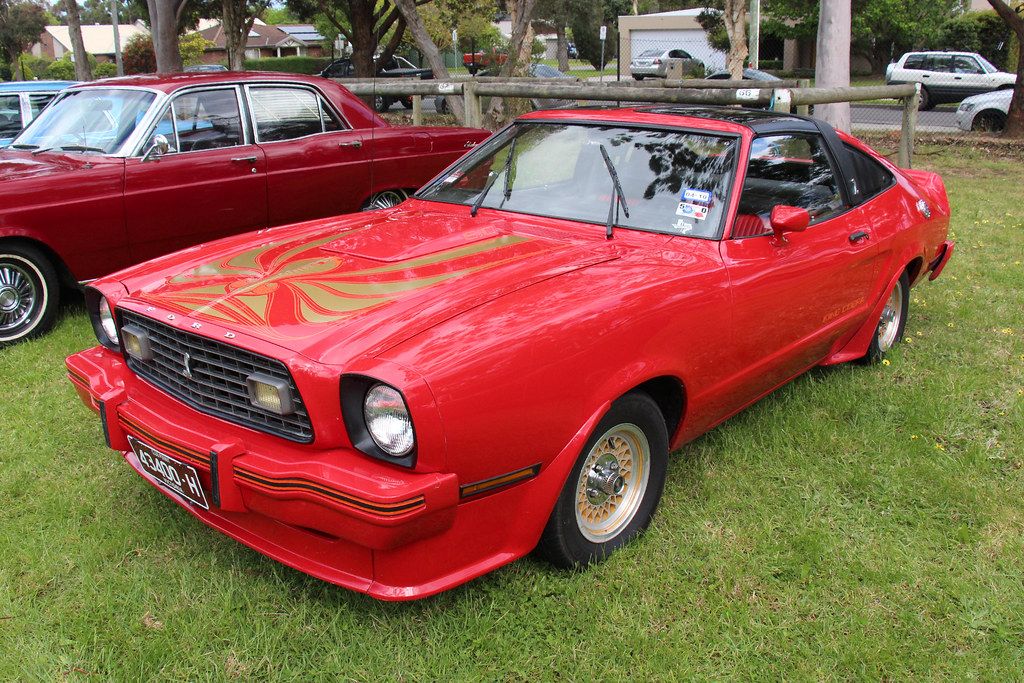
3. **Ford Mustang II**The Mustang II is often regarded as a low point for the iconic Mustang brand, representing a major departure from the muscle car’s powerful roots. This compact, underpowered version of the legendary pony car was built during the challenging 1970s fuel crisis, a period that forced automakers to produce smaller, more economical vehicles. Critics were vocal, lamenting that it was far less exciting than its predecessors, and its styling certainly didn’t do it any favors, looking like a watered-down version of its once-mighty lineage.
Its reputation as a “soft” and uninspiring vehicle meant that for many years, it was largely forgotten, overshadowed by the more powerful and visually striking Mustang models that came before and after. It represented a compromise, a necessary evil in a time of scarcity, rather than a passionate design statement. It was a Mustang, but not the Mustang that enthusiasts had grown to adore.
However, as the Auto Editors of Consumer Guide note in their article on HowStuffWorks, the Mustang II has, over time, gained recognition as a significant piece of automotive history. Its uniqueness, coupled with the fact that it was a Mustang built during such a challenging time for the brand, has unexpectedly made it a collector’s item. For dedicated fans of the brand, owning a 1975 Mustang II is like owning a misunderstood piece of the Mustang legacy. As it becomes rarer to find in good, original condition, its value as a quirky collectible continues to rise, cherished for the story it tells about an era of change and adaptation.
Car Model Information: 2020 Kia Telluride S
Name: Second generation
Caption: Ford Mustang II coupe
Aka: Ford Mustang II , Ford T5 (in Germany)
Class: Pony car,Subcompact car
Production: 1973–1978
ModelYears: 1974–1978
Predecessor: Ford Mustang (first generation)
Successor: Ford Mustang (third generation)
Assembly: Unbulleted list
Layout: Front-engine, rear-wheel-drive layout
BodyStyle: coupé,hatchback
Related: Ford Pinto,Ford Pinto
Manufacturer: Ford Motor Company
Engine: ubl
Transmission: ubl
Wheelbase: cvt
Length: cvt
Width: cvt
Height: cvt
Designer: Buck Mook, Dick Nesbitt
Categories: All articles with dead external links, All articles with unsourced statements, Articles with dead external links from April 2024, Articles with permanently dead external links, Articles with short description
Summary: The second-generation Ford Mustang, marketed as the Ford Mustang II, is a two- or three-door, four-passenger, front-engine/rear-drive pony car manufactured and marketed by Ford from 1973 until 1978. Introduced in September 1973 for the 1974 model year, the Mustang II arrived roughly coincident with the oil embargo of 1973 and subsequent fuel shortages. Developed under Lee Iacocca, it was an “entirely new kind of pony car.” Ford “decided to call it Mustang II, since it was a new type of pony car designed for an era of high gas prices and fuel shortages.”
The Mustang II was 490 lb (222 kg) lighter and almost 19 in (483 mm) shorter than the 1973 Mustang, and derived from the subcompact Pinto platform. While sharing a limited number of driveline components with the Pinto, the Mustang II employed an exclusive subframe, isolating its front suspension and engine mount subframe. The steering used a rack-and-pinion design.
Named Motor Trend’s 1974 Car of the Year and reaching over 1.1 million sales over four years of production, the Mustang II is noted simultaneously for both its marketing prescience and strong sales – while criticized as having abandoned essential aspects of the Mustang heritage and described, in a retrospective after 40 years since its introduction, as embodying the Malaise era.
Get more information about: Ford Mustang (second generation)
Buying a high-performing used car >>>
Brand: Ford Model: Mustang II
Price: $20,988 Mileage: 88,231 mi.
Read more about: 7 Classic Powerhouses: Why These Vintage Muscle Cars Can Still Outmuscle a New Mustang GT
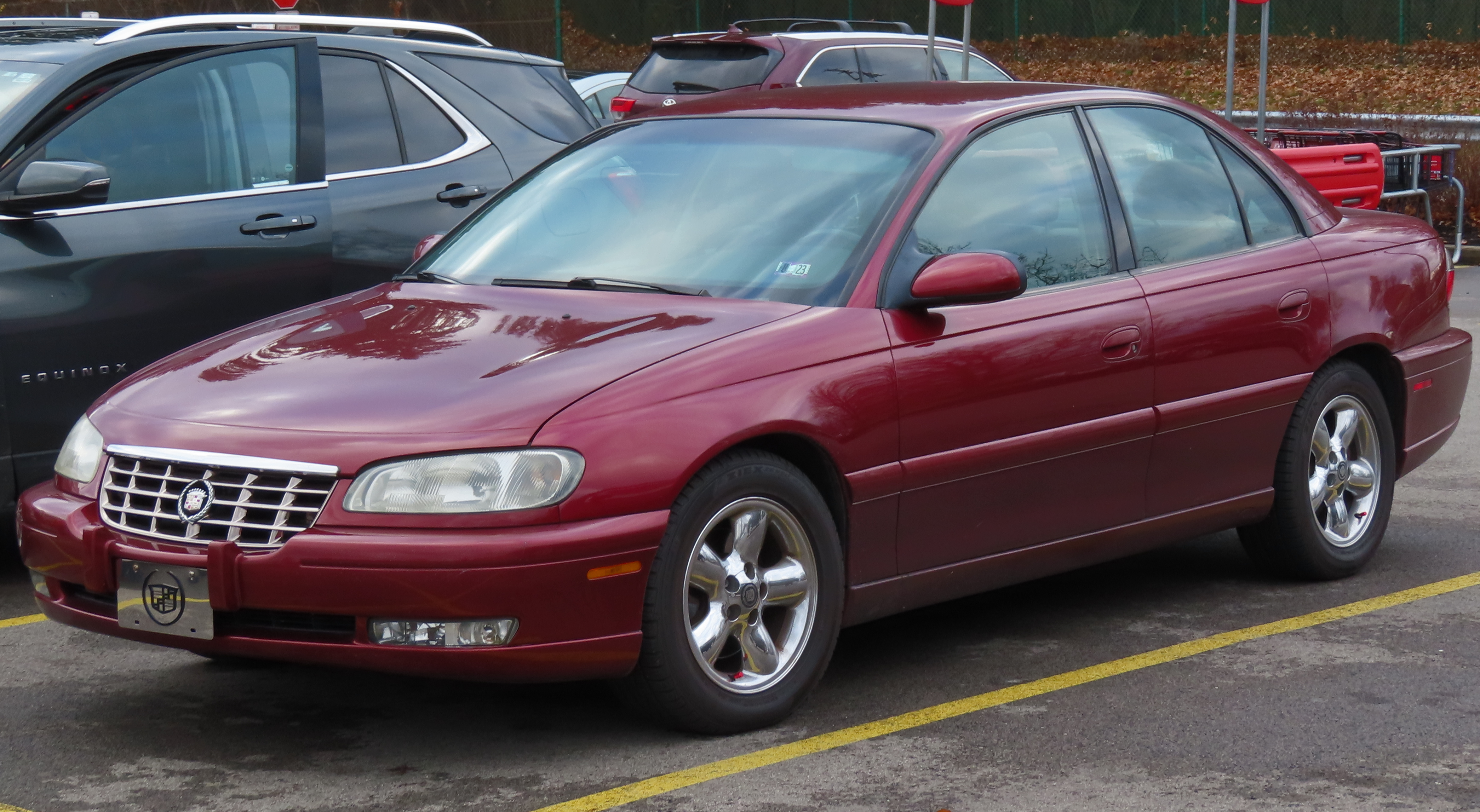
4. **1990s Cadillac Catera**The Cadillac Catera was a calculated attempt by Cadillac to appeal to a younger, more European-influenced luxury market. Unfortunately, this ambitious strategy didn’t quite succeed in any of its goals. Its bland design, lackluster performance, and an undeniable cheap feel left many long-time Cadillac loyalists thoroughly unimpressed. It was a car that tried to be everything to everyone but ended up feeling like nothing much to anyone.
Often referred to as a “poor man’s Cadillac,” the Catera faced heavy criticism for failing to live up to the brand’s storied luxury image. Many customers complained that it felt more like a rebadged Opel, which it essentially was, rather than a true American luxury vehicle. This identity crisis cemented its less-than-stellar reputation in the luxury segment.
Despite its initial less-than-stellar reception, the Catera has surprisingly developed a niche following over time, as discussions on the Cadillac Forums attest. Now, it’s seen as a quirky collector’s item, particularly for fans of 90s luxury cars that dared to be different. The Catera’s underwhelming legacy is ironically part of the reason collectors seek it out—it offers a fascinating glimpse into a time when Cadillac was trying, and struggling, to evolve its brand identity. As fewer of these cars remain on the road, the rare few that do stand out as interesting, if unconventional, collector’s items, celebrated for their unique place in Cadillac’s experimental past.
Car Model Information: 1997 Cadillac Catera Standard
Name: Cadillac Catera
Caption: 1997–1999 Catera
Manufacturer: Opel
Aka: Opel Omega
Production: 1996–2001
ModelYears: 1997–2001
Successor: Cadillac CTS
Platform: General Motors V platform (RWD)
Assembly: Rüsselsheim,State of Hesse,Germany
Related: Opel Omega
Class: Compact executive car
BodyStyle: sedan (car)
Engine: General Motors 54° V6 engine#L81,V6
Transmission: GM 4L30-E transmission,automatic transmission
Length: 194.0 in
Abbr: on
Wheelbase: 107.5 in
Width: 70.3 in
Height: 56.3 in
Weight: 3897 lb
Layout: FR layout
Categories: Articles with short description, Cadillac vehicles, Cars discontinued in 2001, Cars introduced in 1996, Commons category link from Wikidata
Summary: The Cadillac Catera is a compact executive car marketed from 1997 to 2001 model years by Cadillac over a single generation in the United States, Canada and GCC. As a rebadged variant of the Opel Omega B, the Catera was manufactured by Opel in Rüsselsheim, Germany, and was underpinned by GM’s V-body platform. Approximately 95,000 units were built and sold over five model years.
Get more information about: Cadillac Catera
Buying a high-performing used car >>>
Brand: Cadillac Model: Catera
Price: $7,500 Mileage: 67,795 mi.
Read more about: Buyer Beware! These 15 Cars Will Become Your Worst Financial Nightmare After Hitting 100,000 Miles
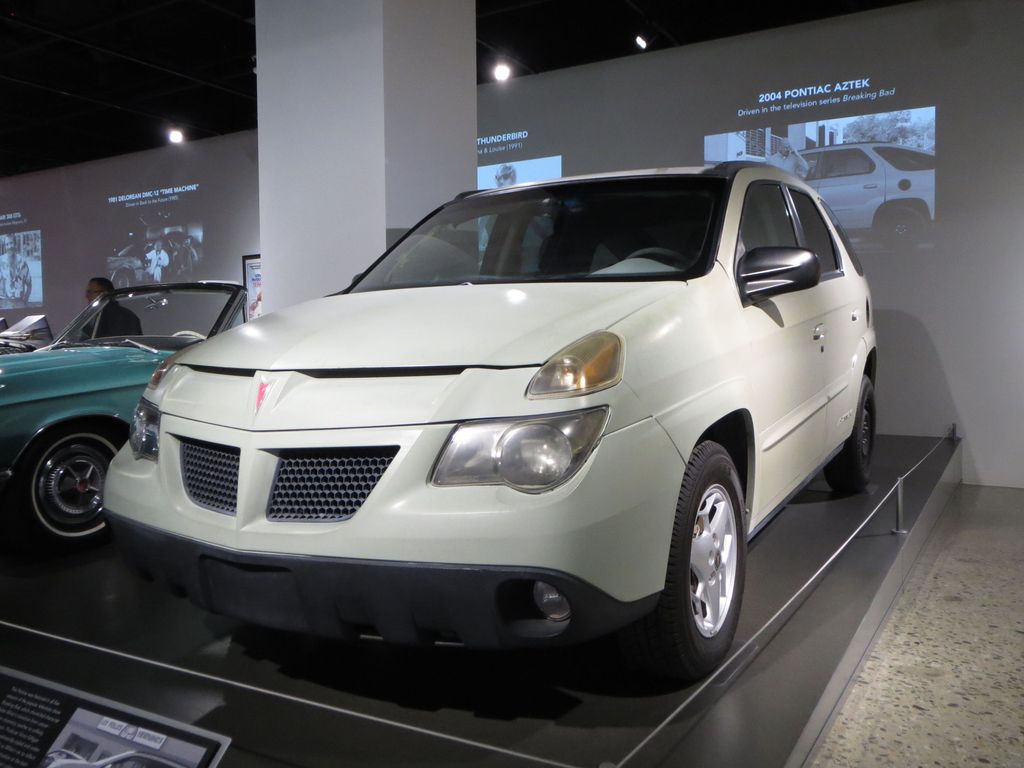
5. **Pontiac Aztek**The Pontiac Aztek is perhaps one of the most notoriously “ugly” cars in recent memory, yet it holds an undeniably unique place in car culture. Known for its strange combination of angular lines, a bulbous rear, and an awkward, high stance, the Aztek was almost immediately reviled upon its release. It seemed completely out of place, as if Pontiac was trying to create a futuristic crossover before the world was truly ready to embrace such a bold, unconventional design.
When the Aztek rolled out, nobody knew what to make of it. Its front fascia looked less like a car and more like a sci-fi villain’s faceplate, and it had more gray cladding than a 2000s suburban strip mall. It was so polarizing, it could probably start a fight at a peace rally. Yet, beneath that… unique exterior, it offered truly innovative features like an available tent accessory that integrated with the car, a center console cooler, and seats that folded flat into a surprisingly usable bed. It was basically the Swiss Army knife of crossovers, albeit one with a really questionable haircut.
Today, the Aztek has cultivated a loyal following and has successfully transitioned from a cultural punchline to a collector’s treasure. The combination of its incredibly bold design, remarkable practicality, and oddball status has rightfully earned it a secure place in automotive history. Many now consider it a “future classic” because of its unique position in the market. It carried adventure gear with genuine purpose and made cross-country camping a genuine possibility in the pre-vanlife era. Pontiac even gave it optional all-wheel drive, and the 3.4L V6 was nothing to scoff at in its day, churning out decent grunt. Those that owned one were part of history—it was one of the earliest crossovers to blend SUV practicality with lifestyle branding, years before “lifestyle vehicle” was even a term. You can roast it all you want, but you will remember it.
Car Model Information: 2004 Pontiac Aztek 4dr All Purpose FWD
Name: Pontiac Aztek
Manufacturer: General Motors
Production: July 2000 – December 2004
Assembly: Ramos Arizpe
Designer: Tom Peters (chief designer: 1997)
Class: Mid-size crossover SUV
BodyStyle: SUV
Platform: GM U platform
Related: Buick Rendezvous
Layout: Front-engine, front-wheel-drive layout
Engine: General Motors 60° V6 engine#LA1,V6
Transmission: GM 4T65-E transmission,Automatic transmission
Wheelbase: 108.3 in (2,751 mm)
Length: 182.1 in (4,625 mm)
Width: 73.7 in (1,872 mm)
Height: 66.7 in (1,694 mm)
Weight: 3,779–4,043 lb (1,714–1,834 kg)
Predecessor: Pontiac Sunrunner
Successor: Pontiac Torrent
ModelYears: 2001–2005
Categories: All-wheel-drive vehicles, All articles needing additional references, All articles with unsourced statements, Articles needing additional references from October 2013, Articles with short description
Summary: The Pontiac Aztek is a mid-size crossover SUV marketed by General Motors introduced in 2000 for the model years 2001 through 2005. As a four-door crossover with front-wheel drive and optional all-wheel drive, the Aztek featured a four-speed automatic transmission with a V6 engine. Marketed by Pontiac as a “sport recreational vehicle,” the Aztek used a shortened platform shared with GM’s minivans (e.g., the Pontiac Montana) featuring 94 cubic feet of cargo room with its rear seats removed. The design employed conventional rear outswing doors rather than sliding doors, and a split rear tailgate, the lower section formed with seat indentations and cupholders. Other features included a front center console that doubled as a removable cooler, optional rear stereo controls in the cargo area, optional sliding cargo floor with grocery compartments, and optional camping package with an attachable tent and air mattress.
Get more information about: Pontiac Aztek
Buying a high-performing used car >>>
Brand: Pontiac Model: Aztek
Price: $995 Mileage: 0 mi.
Read more about: Unvarnished Truth: 14 ‘Classic’ American Cars That Delivered Awful Driving Experiences
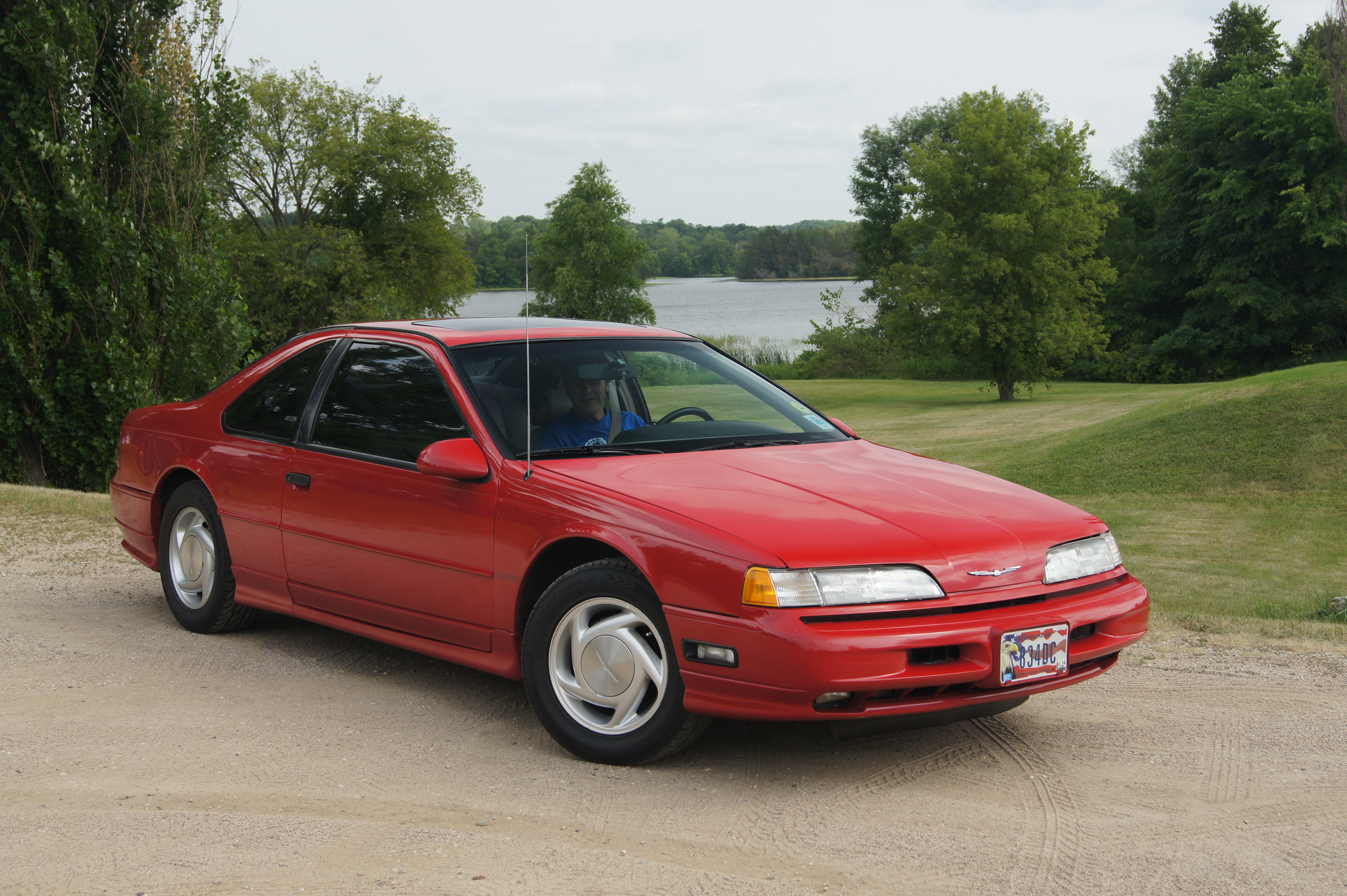
6. **1989-1992 Ford Thunderbird Super Coupe**The Ford Thunderbird Super Coupe was an ambitious attempt to combine luxury and performance in a single, affordable package. Unfortunately, the Super Coupe’s heavy weight and a noticeable lack of refinement made it a less-than-stellar offering in the burgeoning high-performance sedan market. Its boxy styling and what many perceived as a clunky design didn’t help its case, causing it to largely fail to capture the attention of most car buyers. It promised much with its name, but struggled to deliver a truly cohesive experience.
The Super Coupe also famously featured a supercharged V6 engine that, while potent on paper, often promised more than it could truly deliver in real-world driving scenarios. This left many enthusiasts feeling disappointed, as the car never quite achieved the dynamic prowess suggested by its aggressive branding. It was a car caught between identities, unable to fully commit to either luxury cruiser or sports sedan.
Today, however, the Thunderbird Super Coupe is widely regarded as an underrated classic among those in the know. As fewer models remain in existence, collectors have started to genuinely appreciate it for its earnest attempt at blending sportiness with comfort. The car’s limited production numbers and its distinct place in the history of American performance vehicles make it a valuable and intriguing find. Fans of Ford’s unique, quirky cars from the late 80s and early 90s consider it a true gem, even if it remains a bit of an acquired taste, celebrating its bold, if imperfect, vision.
Car Model Information: 2020 Kia Telluride S
Manufacturer: Ford Motor Company
Layout: Front-engine, rear-wheel-drive layout
Name: Ford Thunderbird,Tenth Generation
Caption: 1989 Thunderbird Super Coupe
Production: October 1988–September 1997
Assembly: Lorain Assembly
Predecessor: Ford Thunderbird (ninth generation)
Successor: Ford Thunderbird (eleventh generation)
Platform: Ford MN12 platform
Class: Personal luxury car
BodyStyle: coupe
Engine: unbulleted list
Transmission: Ford AOD transmission,Ford AOD transmission,Mazda M5OD transmission
Related: unbulleted list
Wheelbase: 113.0 in
Abbr: on
Length: unbulleted list
Weight: unbulleted list
Width: unbulleted list
Height: unbulleted list
Designer: Jack Telnack
ModelYears: 1989–1997
Categories: 1990s cars, Articles with short description, Cars discontinued in 1997, Cars introduced in 1988, Commons category link from Wikidata
Summary: The tenth generation of the Ford Thunderbird is a personal luxury car that was produced by Ford for the 1989 to 1997 model years. It was introduced on December 26, 1988 as a 1989 model alongside its sister car, the Mercury Cougar. Developed on Ford’s new MN12 (Mid-Size North American Project 12) platform from the second quarter of 1984 (production approved in mid-1985), the new Thunderbird featured a more aerodynamic body that was slightly shorter in overall length relative to the 1988 Thunderbird but had a nine-inch-longer wheelbase.
With the exception of the 1955 model, the Thunderbird traditionally used no “FORD” exterior badging of any kind. For this generation only, the Ford Blue Oval emblem was used on the trunklid.
Get more information about: Ford Thunderbird (tenth generation)
Buying a high-performing used car >>>
Brand: Ford Model: Thunderbird Super Coupe
Price: $20,988 Mileage: 88,231 mi.

7. **1984 Dodge Rampage**The Dodge Rampage was an undeniable oddball, a hybrid vehicle that bravely combined the practicality of a compact pickup truck with the everyday convenience of a hatchback. Unfortunately, its strange looks and somewhat awkward, mismatched design left many scratching their heads in confusion. Critics simply didn’t know whether to categorize it definitively as a truck or a car, and as a result, it never quite managed to find its stable place in the broader market. It was a concept ahead of its time, perhaps, or simply too unconventional for the mainstream.
Beyond its stylistic challenges, the Rampage also faced criticism for its performance. It was often described as slow, notably underpowered, and not particularly useful for those who genuinely needed the robust capabilities of a real truck. It represented a compromise that satisfied neither the car buyer looking for performance nor the truck owner needing true utility, leading to its limited commercial success.
Despite its numerous shortcomings and initial bewilderment, the Dodge Rampage has unexpectedly become a sought-after collectible among enthusiasts who admire its sheer weirdness. This unique blend of utility and oddball style grants it a special, almost revered, place in automotive history. With a limited number ever produced, it’s now seen as a true rarity, cherished by collectors on the hunt for quirky vehicles from the 1980s. Its inclusion in any car collection adds an undeniable element of surprise and nostalgia, transforming this once-misunderstood vehicle into a fun and increasingly valuable find.
Car Model Information: 1984 Dodge Rampage Base
Caption: 1982 Dodge Rampage
Name: Dodge Rampage
Aka: Plymouth Scamp
Manufacturer: Dodge
Production: 1982–1984
ModelYears: 1982–1984
Assembly: Belvidere, Illinois
Class: Coupé utility
BodyStyle: 2-door truck
Engine: Chrysler 2.2 & 2.5 engine#2.2,Inline-four engine
Transmission: Unbulleted list
Platform: Chrysler L platform
Layout: Front-engine, front-wheel-drive layout
Wheelbase: 104.2 in (2,647 mm)
Length: 183.8 in (4,669 mm)
Width: 66.8 in (1,696 mm)
Height: 51.7 in (1,314 mm)
Related: Unbulleted list
Weight: 2,293 lbs (1,040 kg)
Categories: Articles with short description, Cars discontinued in 1984, Cars introduced in 1982, Commons category link is on Wikidata, Coupé utilities
Summary: The Dodge Rampage was a subcompact unibody coupe utility based on Chrysler’s L platform and manufactured and marketed from 1982 to 1984 model years. Plymouth marketed a rebadged variant for model year 1983, as the Scamp.
The Rampage combined the handling and passenger carrying characteristics of a traditional passenger car with the open-bed versatility and load capacity of a small pickup truck, similar to its competitors: the Volkswagen Rabbit Sportruck and Subaru BRAT.
Get more information about: Dodge Rampage
Buying a high-performing used car >>>
Brand: Dodge Model: Rampage
Price: $8,995 Mileage: 71,544 mi.
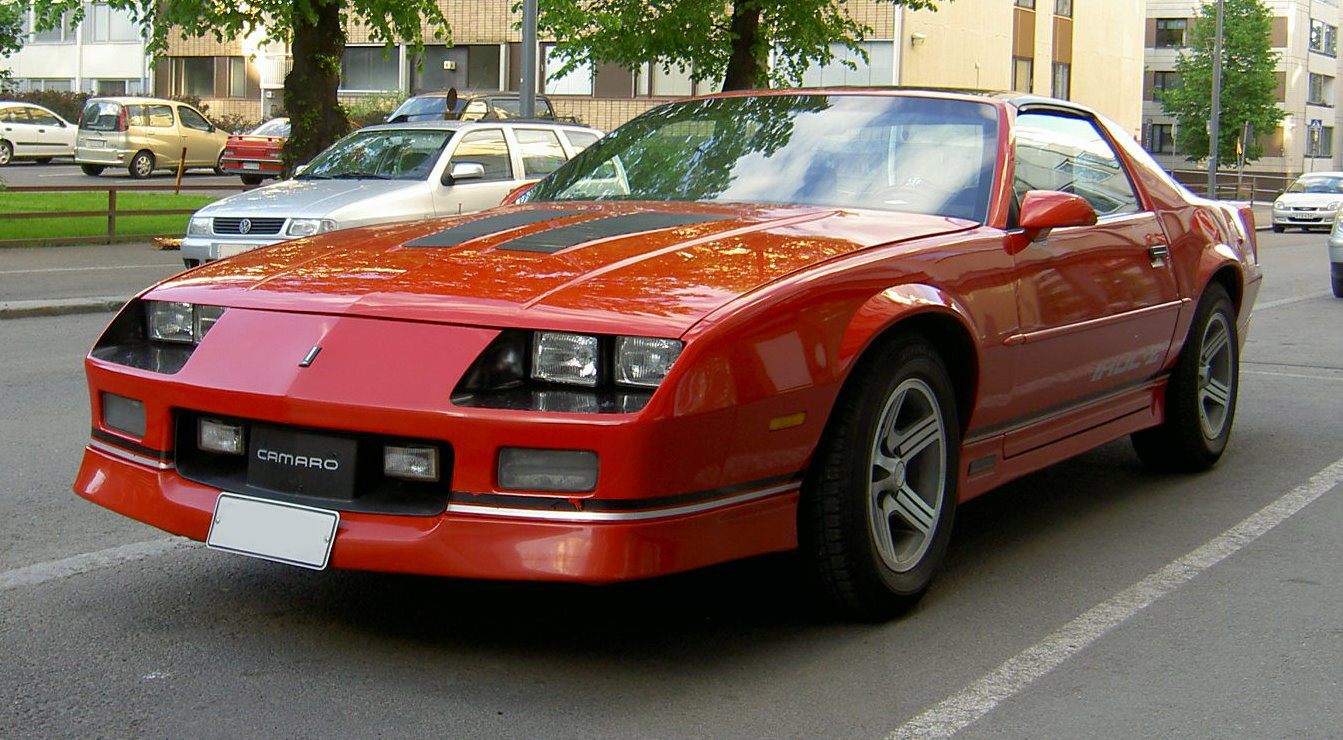
8. **1985 Chevrolet Camaro IROC-Z**The 1985 Chevrolet Camaro IROC-Z was rolled out with the grand ambition of being the ultimate high-performance variant of the celebrated Camaro lineup. Yet, it struggled to truly live up to the lofty expectations that muscle car aficionados had placed upon it. Its 5.0-liter V8 engine, while respectable, wasn’t quite potent enough to dazzle compared to its more formidable predecessors, leaving many enthusiasts craving more power and a truly thrilling ride.
Adding to its challenges was an exterior design that some critics found to be overly styled and a bit too boxy, failing to capture the sleek, aggressive essence that defined the golden age of muscle cars. The IROC-Z felt like a missed opportunity, an attempt to recapture past glory that ultimately fell short, often being overshadowed by competitors who offered more impressive performance and a more cohesive aesthetic package. This lack of excitement left a segment of the fanbase feeling genuinely disappointed.
Despite these initial criticisms and its perceived underperformance, the IROC-Z has found an unexpected, cherished place in the hearts of today’s car collectors. It’s now seen as a quintessential piece of 1980s muscle car culture, embodying an era when these powerful machines were bravely attempting to adapt to a world increasingly concerned with fuel efficiency and more conservative design. Its unique blend of style and, let’s be honest, somewhat underwhelming performance, has given it a quirky appeal.
As time marches on, fewer of these particular IROC-Z models remain in prime condition, which has only amplified their rarity and, consequently, their desirability among collectors. For those who appreciate its specific charm, this Camaro has transformed into a fun, nostalgic vehicle. It offers a fascinating glimpse into a challenging yet pivotal period in automotive history, celebrated for its unique flaws and its undeniable, if sometimes misunderstood, presence.
Car Model Information: 2020 Kia Telluride S
Name: Chevrolet Camaro (third generation)
Manufacturer: Chevrolet
Production: October 12, 1981 – August 27, 1992
ModelYears: 1982–1992
Assembly: Van Nuys Assembly,Norwood Assembly
Designer: Jerry Palmer
Class: Pony car,Muscle car
BodyStyle: liftback,convertible (car)
Platform: GM F platform
Related: Pontiac Firebird (third generation)
Layout: FR layout
Engine: {{convert,151,cid,L,1,abbr=on,Iron Duke engine,Inline-four engine
Abbr: on
Transmission: Manual transmission,Manual transmission,Automatic transmission,Automatic transmission
Wheelbase: 2565 mm
Length: 4877 mm
Width: 1850 mm
Height: 1275 mm
Weight: convert
Predecessor: Chevrolet Camaro (second generation)
Successor: Chevrolet Camaro (fourth generation)
Caption: Chevrolet Camaro IROC-Z
Categories: 1990s cars, All articles needing additional references, Articles needing additional references from February 2014, Articles needing additional references from November 2009, Articles with short description
Summary: The third-generation Chevrolet Camaro is an American pony car which was introduced for the 1982 model year by Chevrolet. It continued to use General Motors’ F-body platform and produced a “20th Anniversary Commemorative Edition” for 1987 and “25th Anniversary Heritage Edition” for 1992. These were also the first Camaros with factory fuel injection, four-speed automatic transmissions, five-speed manual transmissions, four-cylinder engines, 16-inch wheels, and hatchback bodies. For 1987 a convertible Camaro was reintroduced, converted by ASC in relatively small numbers. The third-generation Camaro continued through the 1992 model year.
Get more information about: Chevrolet Camaro (third generation)
Buying a high-performing used car >>>
Brand: Chevrolet Model: Camaro IROC-Z
Price: $20,988 Mileage: 88,231 mi.
Read more about: The New American Dream: Why Ford Broncos and Classic Chevys Are Reaching Astounding Values Among the Ultra-Rich
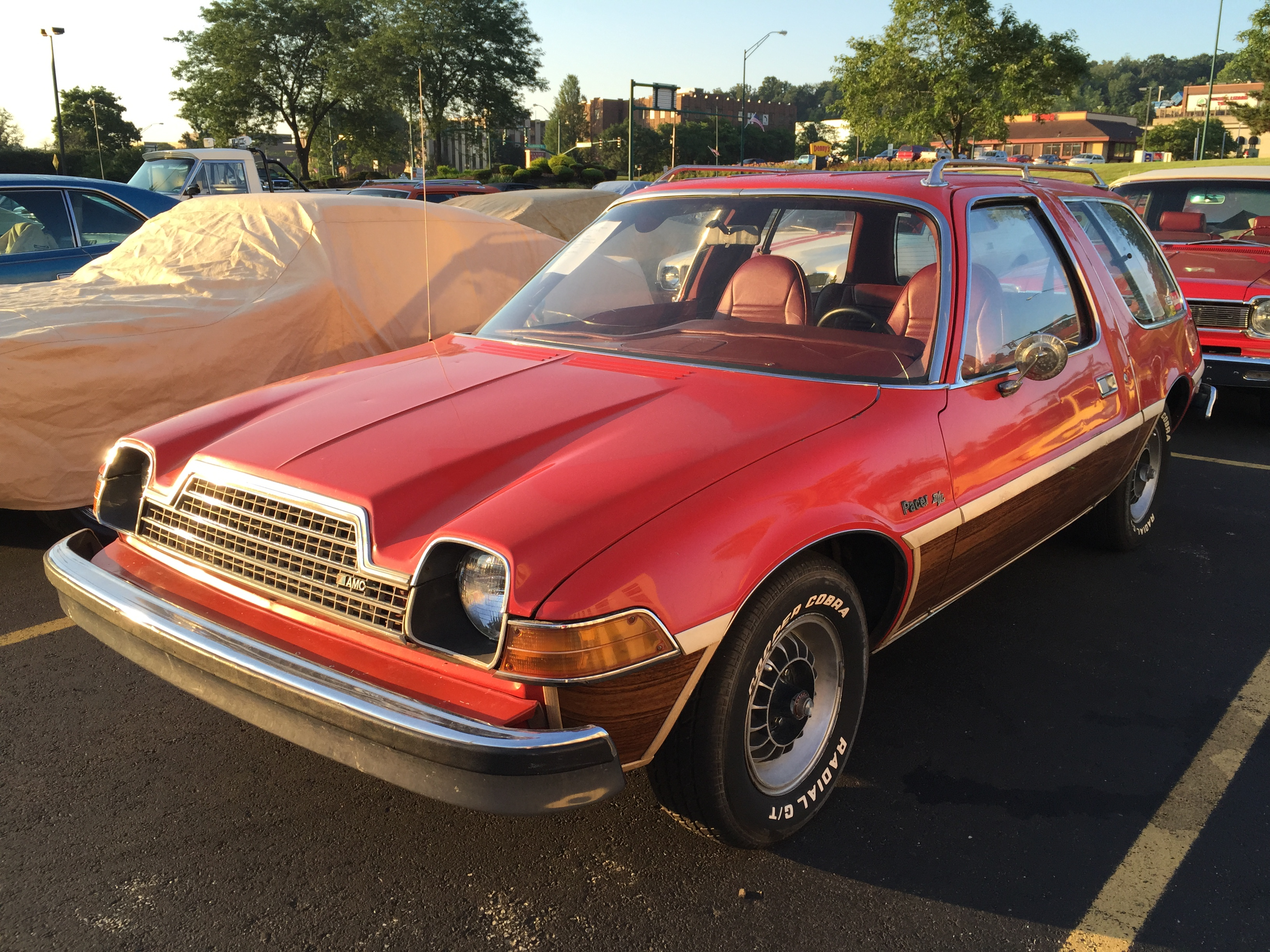
9. **1978 AMC Pacer**The AMC Pacer burst onto the scene with a design so peculiar, it immediately stood out from the crowd, looking less like a serious production vehicle and more like a bold experiment on wheels. With its striking bubble-shaped body and unusually wide stance, it truly seemed to defy conventional automotive aesthetics. Its odd proportions and unconventional styling made it an instant favorite for those with an eye for quirky cars, embracing its distinct personality.
However, for the average car buyer, the Pacer presented a bit of a head-scratcher. Its unique appearance didn’t always translate into practical benefits or widespread style appeal, leading many to question its place in the market. Despite these hesitations, there was an undeniable charm to the Pacer, a certain character that allowed it to brilliantly stand out in a sea of otherwise conventional and predictable vehicles, making it truly unforgettable.
Over the decades since its release, the AMC Pacer has steadily cultivated a reputation as a truly unique collectible, recognized for its daring originality. Many enthusiasts now view it as a potent symbol of the experimental spirit that characterized the American car industry throughout the 1970s, a time when manufacturers were willing to take significant risks with design. Its distinctive look has garnered it a dedicated niche following, solidifying its status as a genuine cult classic.
Finding a well-preserved Pacer today is a delightful and increasingly rare treat for car enthusiasts who are actively seeking something genuinely different, a vehicle that tells a story beyond mere transportation. Its unconventional appeal ensures its value as a sought-after piece of automotive history, celebrating a time when boldness trumped convention, and individuality reigned supreme on the roads.
Read more about: Unvarnished Truth: 14 ‘Classic’ American Cars That Delivered Awful Driving Experiences

10. **1996 Buick Roadmaster Wagon**The 1996 Buick Roadmaster Wagon represented a classic archetype of American station wagons, proudly featuring traditional wood paneling and an impressively long, boxy body. By the mid-1990s, however, the widespread popularity of station wagons had significantly waned, making the Roadmaster feel very much like a nostalgic relic from an earlier, bygone era. It was a vehicle designed for a different time, and its presence felt like a gentle nod to automotive heritage.
This full-sized wagon, while undeniably spacious, was often perceived as large, somewhat impractical for modern sensibilities, and didn’t offer much in the way of cutting-edge design or fuel efficiency compared to the emerging trends. Despite these perceived shortcomings and its anachronistic nature, the Roadmaster cultivated a strong and fiercely loyal following. Its old-school charm and truly immense cargo space were qualities that resonated deeply with a specific segment of the market, celebrating its robust utility.
Today, the Buick Roadmaster Wagon has been gloriously re-envisioned and is widely considered a retro treasure, beloved by a growing community of collectors. Enthusiasts actively admire its distinctive retro styling, its incredibly heavy-duty build, and the powerful wave of nostalgia it evokes for a simpler time. This unique combination of traditional luxury and uncompromising utility makes it an ideal addition for those passionately seeking classic American cars that possess genuine character.
The Roadmaster stands as one of those remarkable vehicles that, despite being largely overlooked during its initial production run, has gracefully found its rightful place in the hearts of those who sincerely appreciate its rich history and undeniable personality. It’s a testament to enduring design and the timeless appeal of solid, reliable American engineering, now a celebrated icon of its era.
Car Model Information: 2020 Kia Telluride S
Name: Buick Roadmaster
Predecessor: Buick Master Six
Manufacturer: Buick
Production: 1935–1942,1946–1958,1990–1996
ModelYears: 1936–1942,1946–1958,1991–1996
Class: Full-size car
Layout: FR layout
Categories: 1950s cars, 1980s cars, 1990s cars, All articles with unsourced statements, Articles with short description
Summary: The Buick Roadmaster is an automobile built by Buick from 1936 until 1942, from 1946 until 1958, and then again from 1991 until 1996. Roadmasters produced between 1936 and 1958 were built on Buick’s longest non-limousine wheelbase and shared their basic structure with the entry-level Cadillac Series 65, the Buick Limited, and after 1940, the Oldsmobile 98. Between 1946 and 1957, the Roadmaster served as Buick’s flagship.
After being resurrected in 1991, the Roadmaster became the marque’s largest vehicle, measuring 10 in (254 mm) longer with a 5 in (127 mm) greater wheelbase than the C-body Buick Park Avenue. This generation was the first in Roadmaster history to be built on the General Motors B-body platform rather than the C-body, which had traditionally been reserved for GM’s largest and most opulent models that were not Cadillacs.
A Buick Roadmaster Estate station wagon was introduced in 1947 and was manufactured in several generations through 1996. The final run of 1991-1996 Roadmasters shared powertrains and platforms with the Chevrolet Caprice, Cadillac Fleetwood, and Oldsmobile Custom Cruiser.
Get more information about: Buick Roadmaster
Buying a high-performing used car >>>
Brand: Buick Model: Roadmaster Wagon
Price: $20,988 Mileage: 88,231 mi.
Read more about: Boomer Dream Machines: 14 Classic Car Icons Millennials Are Overlooking and Why They’re Missing the Mark

11. **1997 Ford Taurus SHO**The 1997 Ford Taurus SHO, which stands for Super High Output, was conceived as a performance-oriented iteration of the otherwise unassuming standard Taurus sedan. It was undoubtedly a powerful machine, boasting an impressive Yamaha-built V6 engine that delivered a surprising punch under the hood. However, the SHO’s exterior styling was, by many accounts, far from exciting or groundbreaking, sticking closely to the conservative design language of the regular Taurus.
The standard Taurus was already known for its somewhat mundane and safe aesthetic, and unfortunately, the SHO didn’t venture far from this established path. This meant that while it packed a serious performance engine, its outward appearance did little to hint at the power within, causing it to largely fail in gaining the widespread recognition and excitement it truly deserved. It was a high-performance car cloaked in an everyday wrapper, a sleeper in the truest sense.
For today’s discerning collectors, however, the Taurus SHO has emerged as a genuine hidden gem, a testament to understated power. It holds a very special and significant place in automotive history as one of the very first affordable sedans to successfully offer truly impressive performance capabilities. Its unassuming exterior, often described as mundane, is precisely what makes it a celebrated “sleeper car”—a vehicle that discreetly delivers exceptional speed and capability without ostentation.
The inherent rarity of the SHO, combined with its unique and potent performance characteristics, transforms it into an intriguing and highly desirable choice for dedicated enthusiasts. It’s a car that defies expectations, rewarding those who look beyond the surface to appreciate its innovative engineering and its unique narrative in the annals of American automotive performance.
Car Model Information: 2020 Kia Telluride S
Name: Ford Taurus SHO
Manufacturer: Ford Motor Company
ModelYears: 1989–1999,2010–2019
Related: Ford Taurus
Class: Mid-size
Layout: Front-engine, front-wheel-drive layout
Designer: Jack Telnack
Categories: 1980s cars, 1990s cars, 2000s cars, 2010s cars, All articles with unsourced statements
Summary: The Ford Taurus SHO (Super High Output) is the high-performance variant of the Ford Taurus. Originally intended as a limited-production model, the SHO was produced for the first three generations of the model line, from the 1989 to the 1999 model years. After an 11-year hiatus, the name was revived for 2010, and continued in use until the 2019 discontinuation of the Taurus model line.
In contrast with standard versions of the Taurus, the Taurus SHO did not have a Mercury Sable counterpart; however, the 2010–2019 SHO served as the basis for the Ford Police Interceptor Sedan (replacing the long-running Ford Crown Victoria Police Interceptor). The final version is the only Taurus ever offered with the twin-turbocharged EcoBoost V6 engine.
The first three generations of the SHO were assembled at Atlanta Assembly (Hapeville, Georgia); the fourth generation was assembled at Chicago Assembly (Chicago, Illinois).
Get more information about: Ford Taurus SHO
Buying a high-performing used car >>>
Brand: Ford Model: Taurus SHO
Price: $20,988 Mileage: 88,231 mi.
Read more about: Rewind to Rad: The ’90s Cars Every Collector is Absolutely Dreaming About Right Now

12. **1995 Chevrolet Caprice**By the mid-1990s, the Chevrolet Caprice, a long-standing fixture in American automotive landscape, began to exhibit an increasingly outdated appearance. With its unmistakably bulky frame and profoundly boxy design, the Caprice seemed to be firmly rooted in a bygone era, a time when large, commanding sedans were the undisputed kings of the road. It was a vehicle that embodied traditional American motoring, perhaps a little too faithfully for the evolving tastes of the decade.
The Caprice had, unfortunately, cultivated a reputation for being somewhat dull, often perceived as underpowered, and notably lacking the contemporary appeal that many other American cars of its time were beginning to showcase. Despite these critical shortcomings and its somewhat anachronistic presence, the Caprice has, in recent years, surprisingly garnered a dedicated cult following, proving that uniqueness can often override initial impressions.
Today, the Caprice is highly valued by enthusiasts for its imposing presence on the road and its undeniable retro appeal, making it a nostalgic powerhouse. It powerfully symbolizes the tail end of the grand American sedan era, representing a significant period just before the automotive market decisively shifted towards smaller, more fuel-efficient vehicles. Collectors now deeply appreciate its classic design, viewing it as a tangible and cherished piece of automotive history.
As the number of these classic Caprice models steadily diminishes on the roads, its status as a collectible continues to rise, securing a special place in the hearts of those who fondly remember a time when, for American cars, bigger was still definitively better. It’s a powerful reminder of an era of unapologetic scale and presence, now celebrated for its unique historical context.
Car Model Information: 1994 Chevrolet Caprice Classic
Name: Chevrolet Caprice
Caption: Chevrolet Caprice PPV
Manufacturer: unbulleted list
Production: unbulleted list
ModelYears: unbulleted list
Predecessor: unbulleted list
Class: Full-size car
Platform: unbulleted list
Layout: FR layout
Categories: 1970s cars, 1980s cars, 1990s cars, 2000s cars, 2010s cars
Summary: The Chevrolet Caprice is a full-size car produced by Chevrolet in North America for the 1965 through 1996 model years. Full-size Chevrolet sales peaked in 1965, with over a million units sold. It was the most popular car in the U.S. in the 1960s and early 1970s, which, during its production, included the Biscayne, Bel Air, and Impala.
Introduced in mid-1965 as a luxury trim package for the Impala four-door hardtop, Chevrolet offered a full line of Caprice models for the 1966 and subsequent model years, including a “formal hardtop” coupe and an Estate station wagon. The 1971 through 1976 models are the largest Chevrolets built. The downsized 1977 and restyled 1991 models were awarded Motor Trend Car of the Year. Production ended in 1996.
From 2011 until 2017, the Caprice nameplate returned to North America as a full-size, rear wheel drive police vehicle, a captive import from Australia, built by General Motors’s subsidiary Holden. The police vehicle is a rebadged version of the Holden WM/WN Caprice. The nameplate also had a civilian and police presence in the Middle East from 1999 until 2017, where the imported Holden Statesman/Caprice built by Holden was marketed as the Chevrolet Caprice in markets such as Saudi Arabia and the UAE.
Get more information about: Chevrolet Caprice
Buying a high-performing used car >>>
Brand: Chevrolet Model: Caprice
Price: $275,000 Mileage: 950 mi.
Read more about: Ignition Roar & Asphalt Dreams: The 8 Iconic Chevy Muscle Cars Every Enthusiast Should Know

13. **AMC Gremlin (1970–1978)**The AMC Gremlin, a subcompact vehicle that emerged between 1970 and 1978, was conceived as a direct competitor to popular imports like the Volkswagen Beetle, yet it debuted as a truly distinct oddity. Its design was famously characterized by a truncated rear end, which gave it the peculiar appearance of a standard car that had been rather abruptly chopped in half. This unconventional styling choice instantly made it one of the most polarizing vehicles on American roads.
Despite its undeniably peculiar aesthetics, the Gremlin possessed an inherent affordability and a truly distinctive look that, over time, began to endear it to a specific audience. Its quirky proportions and unapologetic strangeness made it a car that people couldn’t help but notice, ensuring it stood out in an increasingly crowded automotive market. It was a vehicle that embraced its own weirdness, rather than trying to conform to conventional beauty standards.
Today, this little oddball has transcended its initial reputation to become a cherished symbol of 1970s automotive experimentation and daring design. Its unique history, coupled with its now recognized distinctiveness, has significantly increased its popularity among collectors. Enthusiasts are drawn to its honest quirkiness and the bold statement it made in an era of rapid change and adaptation within the auto industry.
The Gremlin’s legacy endures, celebrated by those who appreciate its unconventional charm and its significant, if often misunderstood, place in American automotive history. Its status as an “ugly” car has ironically become a badge of honor, making it a valuable and intriguing find for collectors seeking vehicles with true character and a story to tell beyond mere beauty.

14. **Chevrolet Corvair (1960–1969)**The Chevrolet Corvair was America’s ambitious and innovative response to the growing popularity of European-style, rear-engine cars, representing a significant departure for an American manufacturer. However, its unusual proportions and unconventional design proved to be a source of bewilderment for many buyers, who were unaccustomed to such a radical layout in a domestic vehicle. It was a bold engineering statement, but one that presented a stylistic challenge.
The Corvair’s reputation was further significantly tarnished by Ralph Nader’s influential book, “Unsafe at Any Speed,” which critically highlighted perceived safety flaws, particularly concerning its swing-axle rear suspension design. This controversy deeply impacted public perception and sales, casting a long shadow over what was otherwise an innovative and technically interesting automobile. It became a focal point in the burgeoning consumer safety movement.
Despite these significant controversies and its initial struggle for widespread acceptance, the Chevrolet Corvair has, over time, been increasingly appreciated by dedicated enthusiasts for its truly unique engineering and groundbreaking approach. It stands as an enduring icon of 1960s automotive innovation, representing a pivotal moment when American carmakers were willing to experiment with unconventional designs and mechanical layouts.
Today, collectors are actively drawn to the Corvair’s distinctive place in history, recognizing its daring nature and the profound impact it had on subsequent automotive safety standards. Its journey from a polarizing vehicle to a revered collectible highlights how intrinsic historical significance and unique technical attributes can ultimately outweigh initial aesthetic judgments, cementing its legacy as a truly remarkable and enduring American car.
Car Model Information: 1964 Chevrolet Corvair Monza
Caption: 1964 Chevrolet Corvair Monza
Name: Chevrolet Corvair
Manufacturer: Chevrolet
Production: 1960–1969
Platform: GM Z platform
Chassis: Unibody
ModelYears: 1960–1969
Assembly: United States,Kansas City, Missouri,Oakland, California,Van Nuys,St. Louis,Flint, Michigan,Belgium,Canada,Mexico,South Africa,Switzerland,Venezuela
Class: Compact car
Successor: Chevrolet Vega
Layout: Rear-engine, rear-wheel-drive layout
Categories: All Wikipedia articles written in American English, All articles lacking in-text citations, All articles needing additional references, All articles with dead external links, All articles with specifically marked weasel-worded phrases
Summary: The Chevrolet Corvair is a rear-engined, air-cooled compact car manufactured and marketed by Chevrolet over two generations between 1960 and 1969. The Corvair was a response to the increasing popularity of small, fuel-efficient automobiles, particularly the imported Volkswagen Beetle and the success of American-built compacts like the Rambler American and Studebaker Lark.
The first generation (1960–1964) was offered as a four-door sedan, two-door coupe, convertible, and four-door station wagon. A two- and four-door hardtop and a convertible were available second generation (1965–1969) variants. The Corvair platform was also offered as a subseries known as the Corvair 95 (1961–1965), which consisted of a passenger van, commercial van, and pickup truck variant. Total production was approximately 1.8 million vehicles from 1960 until 1969.
The name “Corvair” was first applied in 1954 to a Corvette-based concept with a hardtop fastback-styled roof, part of the Motorama traveling exhibition. When applied to the production models, the “air” part referenced the engine’s cooling system.
A prominent aspect of the Corvair’s legacy derives from controversy surrounding its handling, articulated aggressively by Ralph Nader’s Unsafe at Any Speed and tempered by a 1972 Texas A&M University safety commission report for the National Highway Traffic Safety Administration (NHTSA) which found that the 1960–1963 Corvair possessed no greater potential for loss of control in extreme situations than contemporary compacts.
To better counter popular inexpensive subcompact competitors, notably the Beetle and Japanese imports such as the Datsun 510, GM replaced the Corvair with the more conventional Chevrolet Vega in 1970.
Get more information about: Chevrolet Corvair
Buying a high-performing used car >>>
Brand: Chevrolet Model: Corvair
Price: $29,988 Mileage: 74,787 mi.
From the bold, experimental forms of the AMC Gremlin and Pacer to the unexpected performance in a plain wrapper like the Ford Taurus SHO, these vehicles tell a compelling story. They remind us that true value in automotive history isn’t always found in showroom perfection or universal acclaim, but often in the audacious, the odd, and the wonderfully unique. These so-called “ugly” American cars, once misunderstood, have carved out a truly special place in the hearts of collectors, proving that sometimes, the most memorable journeys are taken in the most unconventional rides. They’re more than just metal and rubber; they’re quirky characters, each with a fascinating tale of initial disdain evolving into unexpected adoration. So, next time you spot one of these automotive eccentrics, remember, you’re not just looking at a car – you’re looking at a legend in its own right.

